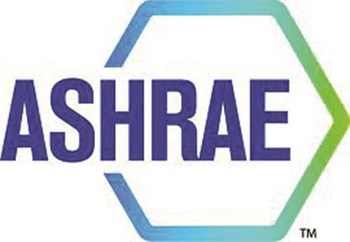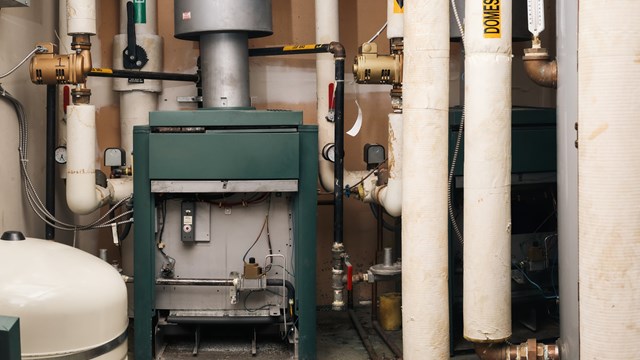
Heating and cooling systems within co-op or condominium developments are called upon to provide safe, consistent energy to residents. The people who bring you heat, air cooling and refrigeration know that, and want to find what works—and what doesn’t—as technology evolve. They invest a good deal of time and effort into finding and sharing the answers to this search and similar questions about their work. What results are higher standards for buildings, better efficiency and safety for all?
The American Society of Heating, Refrigerating and Air-Conditioning Engineers—ASHRAE, founded in 1894—has a membership of more than 50,000. As an exceptionally active professional and educational organization, ASHRAE focuses on advancing heating, ventilation, air conditioning and refrigeration products, improving environmental sustainability, and encouraging the best technology through research, standards writing, publishing and continuing education.
Food for Thought
That’s a tall order, but members don’t shy away from it, attending sessions like the recent, “Are High-Performance Buildings Really Performing?” and supporting research into new product and technology development. ASHRAE chapters are busy, sustained in part by the support and involvement of ASHRAE’s executive board.
The New York chapter is comprised of over 900 members and is part of a widespread, national and international organization. Newly elected president Steven Baumgartner has held the post for only two months, but has been involved with ASHRAE for over 10 years. “There are a lot of excellent groups pushing high-performance and energy efficiency issues in the city, but I felt most closely aligned to the mission of ASHRAE,” he says.
“ASHRAE is an international nonprofit technical society. Our areas of expertise include HVAC&R [heating, ventilation, air conditioning and refrigeration] codes and standards, energy efficiency and indoor air quality, among others,” says Baumgartner. “What I like about ASHRAE is that it strikes a good balance between depth of expertise in these areas and a large breadth of knowledge of areas in the industry. ASHRAE also supports a strong research program on the areas mentioned.”
ASHRAE came about through the 1959 merger of the American Society of Heating and Air-Conditioning Engineers and the American Society of Refrigerating Engineers.
Membership includes engineers and others associated with heating, ventilation, air conditioning or refrigeration—such as indoor air quality and energy conservation, green/solar, HVAC, etc. Because the connection to the national/international organization is so strong, membership provides access to state-of-the-art HVAC&R technology and opportunities to participate in research and development of that technology. Education and training are another aspect that is important to membership and part of ASHRAE’s goals. Even students in the field are welcomed as members.
A Worldwide Society
All told, more than 51,000 people, from more than 100 nations, make up the society—engineers, mechanical contractors, building owners, employees of manufacturing companies, educational and research institutions, government or any organization concerned with environmental control. Professionals in related fields, such as architecture and medical research, are allied with the organization.
With such a diverse membership, it’s only natural that ASHRAE is creating technology that meets current and future needs as well as catering to member interests, such as career improvement. There is considerable interest in new products, sustainable systems, green energy systems, member training, business operations and career opportunity. Both individual chapters and the national organization present training and learning opportunities to members.
ASHRAE’s Historical Committee sponsors and conducts research into the history of heating, ventilation, air conditioning and refrigeration, encouraging publication of historical and profession-related materials, as well as making them available to members. Regional and chapter historians assist in the process.
Baumgartner believes the benefits of membership are immeasurable, noting that the New York Chapter members include consulting engineers, sustainability leaders, contractors, manufacturers and architects, providing an excellent conduit to network with other professionals in the field. Baumgartner also points out that ASHRAE provides its members with access to the latest technology through standards, guidelines, professional certification programs and online learning.
Guidance for Professionals
“As a grassroots organization, chapters provide members with a voice to society headquarters and suggestions and ideas for new programs, products and services flow up from the chapters to the Board of Directors,” says Baumgartner. “Chapters are also provided with training and resources from headquarters to help improve members’ experiences on a local level.”
Baumgartner is also big on ASHRAEs’ education programs and seminars. “ASHRAE New York and AIANY [American Institute of Architects New York chapter] has been driving an integration series that in my opinion has some of the best technical content that I’ve seen in the industry.”
ASHRAE New York and AIANY are jointly sponsoring an upcoming seminar “Adaptability, The Evolution of Building Envelopes” which will be held on November 7th at the Center for Architecture at 536 LaGuardia Place in New York City. Refreshments will be served at 6 p.m. and the session will be held from 6:30 to 8 p.m. The cost is $10 for ASHRAE/AIA members and $20 for non-members. For more information, go to www.AIANY.org.
Ann Connery Frantz is a Massachusetts freelance writer. Staff Writer Christy Smith-Sloman contributed to this article.









Leave a Comment